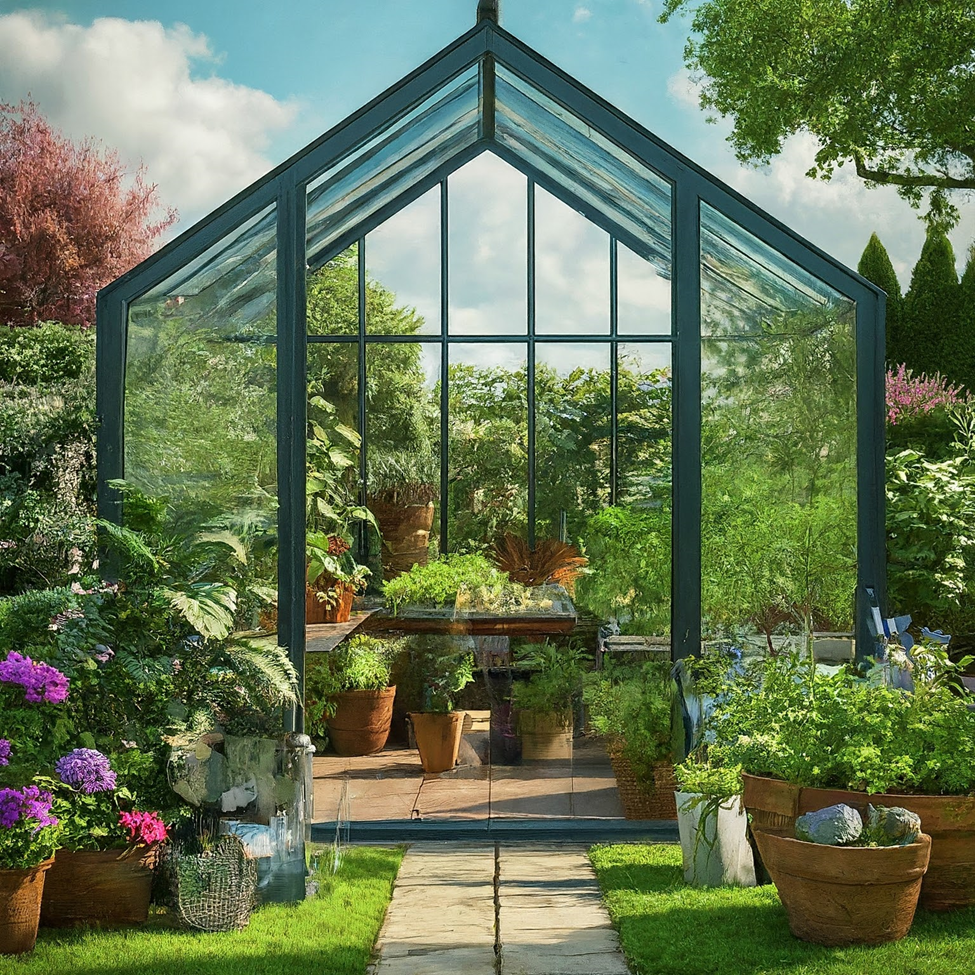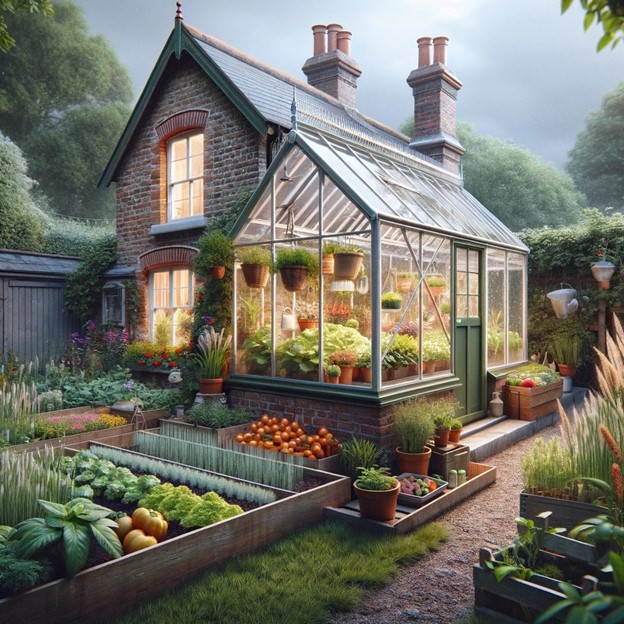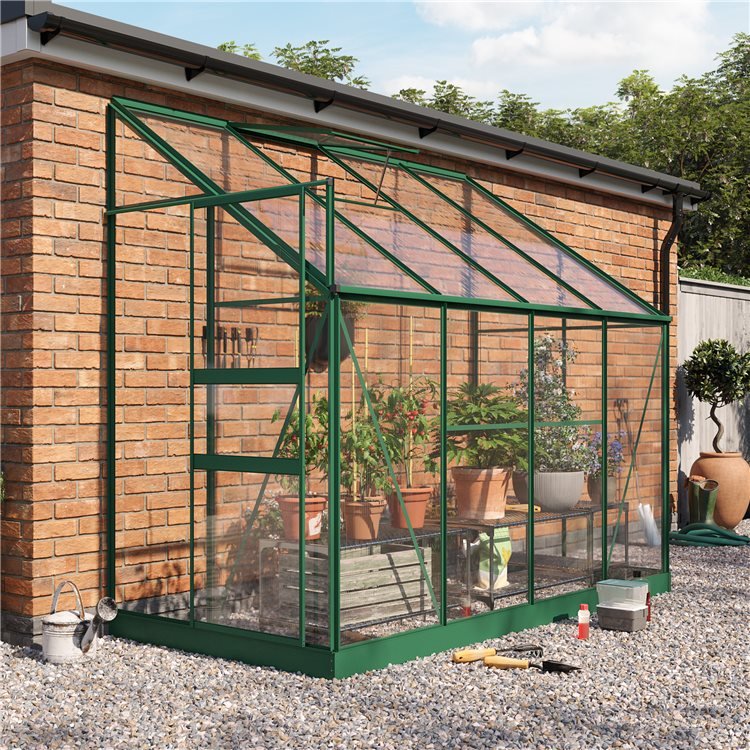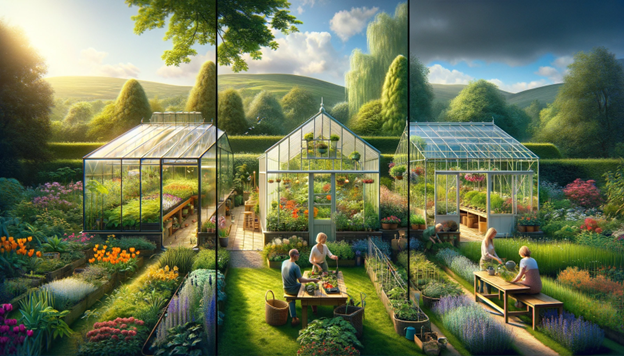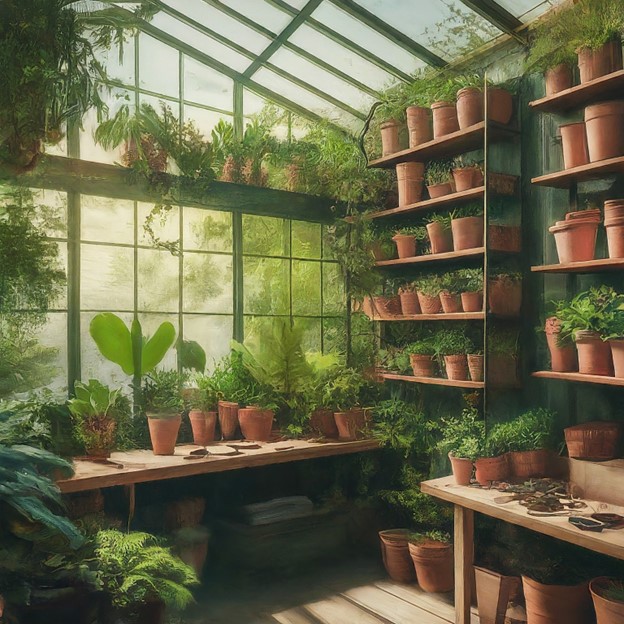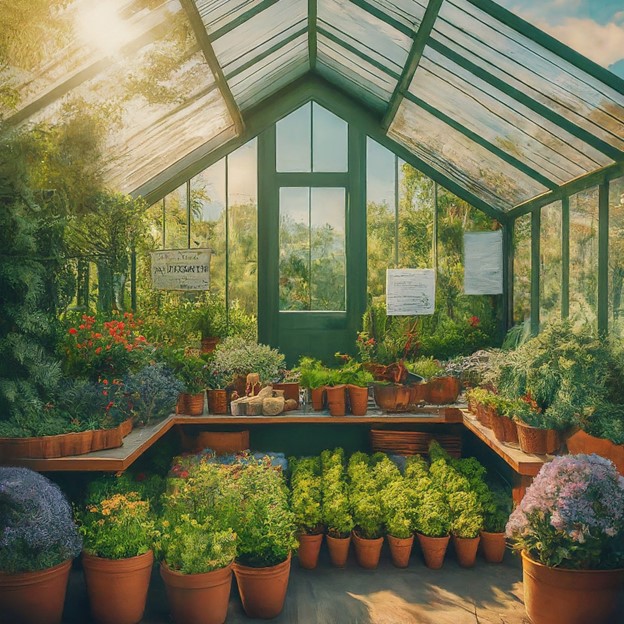Grocery prices are soaring, rising 26% in 2023 alone. With high prices and limited wiggle room in shopping budgets, more Brits are returning to growing their own fruits and vegetables. With a climate notably difficult for growing certain plants, this renewed interest in gardening is shining a light on the game changing value of a UK greenhouse. Even a small greenhouse or shed greenhouse combo can boost your fruit and vegetable yield significantly compared with outdoor garden growing.
We explore the benefits of self-sufficiency and how greenhouses can save your produce from the unpredictable British weather.
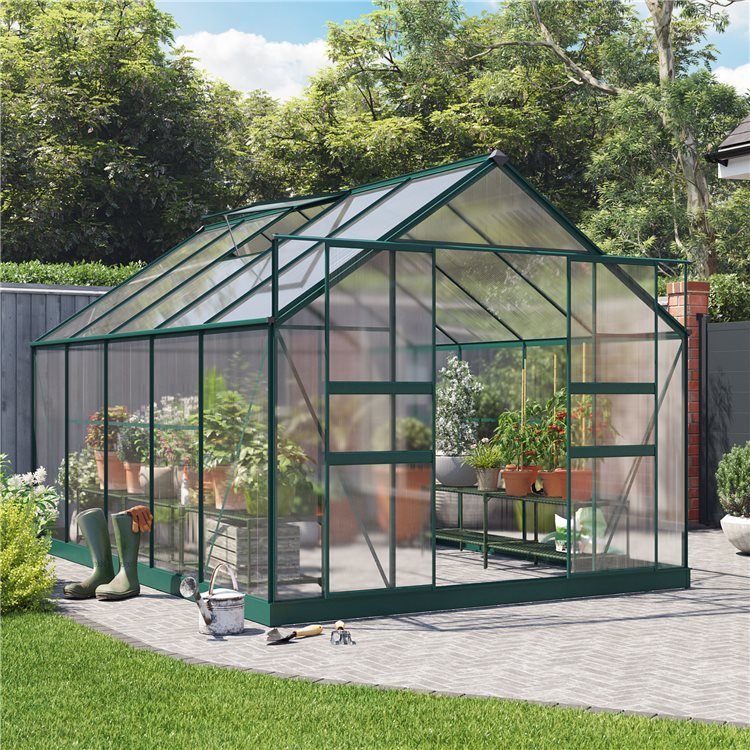
BillyOh Harvester Walk-In Aluminium Greenhouse
Navigating the UK Greenhouse Maze
Britain’s relationship with the greenhouse dates back to the 17th century. Farmers and gardeners discovered their power to increase yields and protect plants from changing weather conditions. Remaining a staple of British gardening today, materials have improved to make these simple yet effective structures even more efficient.
Using a greenhouse can increase your yield of fruits and vegetables, but the choices can be a little overwhelming at first glance. Fortunately, we are sharing the greenhouse know-how to get you started on your journey to delicious harvests.
Image via Dall-E
British Greenhouse Challenges
When most people think of greenhouse gardening, images of large industrial farm greenhouses or their grandfather’s garden shed come to mind, but they are much more valuable than we might realise.
Britain faces more challenges for all year round gardening due to temperature changes and reduced daylight, but greenhouse technologies have soared in recent years. Using materials such as polycarbonate panels to retain heat and reduce scorching, your greenhouse can become your home’s personal greengrocer.
Knowing about challenges is the first step to overcoming them. Some of the more obvious challenges with greenhouse gardening in the UK include:
- Space problems: As many Brits live in homes with smaller gardens or patio spaces, discovering options such as lean to greenhouses for small spaces can open up a new world of gardening possibilities. Small spaces can be limiting, but in true British style, we can work with what we have and make it wonderful!
- Inconsistent sunlight: With more grey days than sunny ones in an average year, British weather can be a difficult partner for gardeners. Regardless, British farming and gardening still thrives year after year. By positioning your greenhouse to fit the uniqueness of your garden and employing the best heat retaining practices, you can avoid disasters during cold seasons and wet weather.
- Damp conditions: Rainy days can bring damp conditions which are not always ideal for growing. Excess moisture can damage plants and even cause rot to set into wooden greenhouses. Using simple moisture control techniques can make rainy days a positive for your garden and keep your greenhouse plants thriving.
BillyOh Polycarbonate Lean-To Greenhouse
Finding Tailored solutions
The challenges of changing British weather are easily overcome with a little planning and working with your space. With many greenhouse options available, everyone can find a tailored solution to fit their needs. Some modern styles of greenhouse perfect for UK gardeners include:
- Lean to greenhouse for small spaces: Smaller gardens can present a space issue for gardening in a greenhouse. Lean-to greenhouse options are game changing for horticultural enthusiasts with small spaces. These structures fit snugly against the side of your house, saving space and providing protection against the elements.
- Polycarbonate options to retain heat: During days when sunlight is not abundant, using a polycarbonate greenhouse can maximise heat retention. Keeping your fruits and vegetables at a higher temperature through cold nights, polycarbonate panels lose less heat than their glass counterparts.
- Vertical stacking: With limited growing space inside a small greenhouse, using shelving to make the most of vertical space can multiply your yields. Vertical shelving allows you to plant more varieties, giving more options for creating meals, or sharing and swapping with neighbours.
Image via Dall-E
Design Elements for UK Harvest Kings & Queens
Choosing the best greenhouse for your unique garden sets you up for success from the beginning. A quality greenhouse provides:
- An investment in your food stability
- A way to deepen your relationship with the earth
- Improvement to your garden’s features and value
- Opportunities to teach your children about the roots of food
Consider some of the following design elements when selecting the right greenhouse for your garden and setting it up for the best yields possible.
Materials
Greenhouse options today are much more advanced and varied than back in your grandparents’ day. Selecting the right material for your greenhouse can help increase your harvest yield and improve the structure’s durability for the future. Some of the material options available include:
Polycarbonate panels: Extremely efficient, with better heat retention than traditional glass options, polycarbonate greenhouses are remarkably durable. These modern panels have improved light diffusion to prevent scorching and stand up to rough weather much better than older greenhouses.
Wooden greenhouses: Wood options can be cheap greenhouses compared to their metal counterparts, but actually offer excellent heat retention due to the thermal properties of the wood. An attractive and traditional looking addition to your garden, wooden greenhouses are a great option for garden areas without an abundance of direct sunlight.
A metal greenhouse: For a true long term investment, a metal greenhouse provides the best durability. With no rotting issues to worry about and a strong, sturdy frame to withstand the worst of British weather, a steel frame greenhouse is perfect for gardeners building a self-sustainable life for the long run.
Location and orientation
The location of your greenhouse and its orientation in your garden can make a huge difference to the yield of your produce. With UK sunlight often limited during short daylight hours and cloudy weather, situating your greenhouse to capture the most light can improve your results immediately.
Situate your greenhouse in a South facing orientation to help maximise light for your plants. As the sun moves over your plants from East to West during the day, your greenhouse will spend less time in the shade and absorb more heat to keep your plants comfortable during the nights.
Image via Gemini
Layout
Once your chosen greenhouse is built and you are ready to start growing, taking a few moments to carefully design the layout inside can dramatically help your yield of tasty fruits and vegetables. Paying attention to the following elements can pay dividends in the future:
- Light requirements: Some plants need more light than others in order to thrive. Place varieties that need light in the sunniest spots of your greenhouse, with shade growing plants tucked into warm yet shady areas.
- Shelving: Using shelving to stack plants vertically can increase your greenhouse planting space. This technique is especially useful in small greenhouses.
- Potting area: Including a potting bench or specific area for working in your greenhouse allows you some designated space to tend your plants all year round.
- Reduce clutter: Keeping your plants in zoned areas, and tools in their own spot, you can reduce clutter within your greenhouse. Keeping the area free of overgrowth or extra items helps the air to circulate, the light to reach your plants, and stops pests from finding places to hide.
Irrigation
Correct watering of your plants and keeping the ideal moisture level in your greenhouse is a major factor in producing a bountiful harvest all year round. Manually watering and tending to your plants each day can deepen your connection with the earth, but schedules do not always allow for such a personal touch.
If you are prone to forgetting your plant’s needs or your life is a bit too hectic for daily care, you can turn to easy and automatic irrigation options to keep your crops watered and happy. Automatic options include:
- Automatic sprinkler systems: Automated watering systems can prevent accidental neglect of your plants, with many options working with solar power without the need for a power outlet.
- Growbag watering options: Automatic growbag watering systems are available to water plants from underneath without creating too much moisture in your greenhouse.
Ventilation
A greenhouse is designed to maximise warmth and retain water for year round growing.These design features can lead to too much heat or moisture during the summer months, creating moulding problems and leading to rot and failed harvests.
These issues can be avoided with simple ventilation and shading habits, protecting your plants and increasing your delicious summer yields. To prevent overheating and ensure you have enough ventilation:
- Install enough ventilating panels: In addition to opening doors, ventilating panels installed in your greenhouse can offer more options for opening up your structure and allowing better airflow. Choosing a greenhouse with a good number of ventilation panels can save you from experiencing issues in the future.
- Track your temperature: Keep a thermometer in your greenhouse to keep an eye on the temperature. According to the Royal Horticultural Society, the temperature in your greenhouse should ideally stay below 25-27°C.
- Ventilate your greenhouse: Open doors and vents on sunny days to encourage as much ventilation and air circulation as possible. When temperatures are high, your greenhouse needs more ventilation than you might think.
- Consider automated options: Investing in a greenhouse with automated venting and shading can take the guesswork out of ventilation issues, keeping your plants healthy whatever the weather.
- Installing blinds: Consider installing internal or external blinds to protect your plants if your greenhouse gets a lot of direct sun and needs summer shading.
Image via Gemini
Sidestep the UK Greenhouse Blunders
Choosing the right greenhouse for your space is the first step to producing your very own tasty fruits and vegetables, but some common mistakes can lead to growing disasters. Experience your highest yields by avoiding these frequent greenhouse issues:
Overwatering
It is tempting for new gardeners to try to increase their growing yield by watering plants more often than necessary. This can easily lead to moisture issues, potentially causing mould problems within the plants and even rot in the structure if you are using a wooden greenhouse.
To prevent overwatering problems, be sure to note the water needs for each of your chosen plants and consider automated watering options if you find yourself stretched for time.
Overcrowding
Overcrowding plants is a common greenhouse mistake. Plants crowded together struggle to absorb enough light and nutrients to thrive. By using good spacing and allowing plants to spread out naturally, each plant will yield more produce and you can more easily spot any pest issues as they have less plant foliage to hide amongst.
Poor ventilation in damp conditions
Ventilation is just an issue during the hot sunny season. Rainy days can also create moist atmospheres, leading to increased moisture in your greenhouse. Although greenhouses lock in moisture to help plants to grow, too much moisture can lead to disaster, even during colder months. Paying attention to ventilation all year round is important to improve your delicious harvest.
In Conclusion
Reducing your grocery bills by growing your own fresh fruits and vegetables has rewards beyond simply saving money. By using a greenhouse to increase your yield and success rate, you can boost your gardening success and nurture your relationship with the earth.
Making smart decisions at the start about your greenhouse size, material, layout, and maintenance can save you a lot of trouble down the road and lead to greater yields from the beginning. See how Garden Buildings Direct can help you to create the perfect growing space to nurture your green thumb.
References:
UK Office For National Statistics: Cost of Living Insights: Food
Royal Horticultural Society: Greenhouse Ventilation and Shading
UK Parliament Post: Future of Horticulture; Sasha Bradshaw & Jonathan Wentworth 2023

